Latest Posts by saintedsorcery - Page 2

Art Of Maquenda, Dukkha Lustre

‘The Druids’ Julia Tar
What do you think of Joyofsatan.org? They claim to follow the Sumerian God Enki-Satan, they’re pro-choice, they follow gay Pagan Gods and they’re the largest Satanist group in the world.
Well I’d never heard of them before now. I just did a quick look at their website and although they swear that Satanism isn’t a reaction to Christianity (which I disagree with because look at Anton LaVey) their homepage is just paragraphs of how “Judeo/Christianity” (those are two separate religions but okay) is evil and terrible and the source of everything wrong with the world. Just seems like they’re trying too hard. I also really disagree with their stance on Satanism being the oldest/truest religion in the world. It looks like they’re just slapping satanic aesthetics/concepts onto older religions and claiming it as truth which just historically isn’t the case.
Again this is all just initial reactions to their homepage, I know nothing about them on a deeper level and hadnt heard of them before today so take all that with a grain of salt I guess.
Heresy As Healing

When I first got into paganism and witchcraft, I did what I think a lot of people do and took a very hard turn in to “fuck Christianity!” The literature and discourse of the early and mid 2000′s didn't help this mindset either. There was a lot of talk about how Wicca (I was an eclectic wiccan at the time) was the survival of an ancient pre-Christian religion and that Christianity stole its practices, holidays, and pretty much everything else, from paganism.
Needless to say my religious baggage went unpacked for YEARS?
That was until i left my more Wicca-inspired practice and found “traditional witchcraft”. In these spaces i found something that i had been lead to believe was impossible: Witchcraft and Christianity coexisting. Not only coexisting, but a style of witchcraft created by almost biblical teachings on their heads and pulling out the magic. Lucifer and Azaezel being sources of witch-power, Cain being the first Sorcerer, the witch’s horned one as the Devil! Seeing the witch-trials as not simply a tragedy, but pulling wisdom and magic from the confessions. All of this was new and exciting!
Beginning my research into this amazing new avenue was the first step in healing my heart and soul from the hitherto ignored scars left by my time in the Church. The more I walked this strange and crooked path, the more I found value in heresy. Calling to the Man in Black at a crossroads, flying from my body to the Witch’s Sabbath, reciting the Lord’s Prayer backwards. All of these were powerful in ways I never thought they could be. I laughed at myself. If you had told me at 18 that in 5 years id be dancing with the Devil, I would have raged about there being no Devil in the Craft. While I understand now why the 90s-2000s were so “anti-devil” and “love and light” I’m glad that we can now look at witchcraft and its history with a more nuanced lens.
Now in some ways I've come full circle. I am not a Christian, and I don't think i ever will be, but I pray to saints, I have a growing interest in Mary, I use psalms and bible verses in my spell work, i craft rosaries as a devotional act to the spirits I serve and honour. My patron goddess has even started to come to me with Marian imagery and titles.
In Fayerie Traditionalism/Fayerism we’re encouraged (sometimes outright told) to avoid and expunge all Abrahamism from our lives and certainly from our Sorcery. We’re told that there is no magic or value in Abrahamic traditions. This has been my biggest hurdle with this path. For me, i find so much power in using folk magic that would be deemed “witchcraft” by the Church, regardless of how much scripture is in it. I think to continue this idea of “there's no place for Christianity in witchcraft” does such a disservice to the history of witchcraft in Europe and the US. So many practices would not exist if our ancestors had not learned to synchronize and hide in plain site. I’m not calling on God when I use a psalm to heal, I'm speaking words of power that have been spoken for centuries by other healers and workers. When I pray the rosary, I do it to honor my ancestors who found comfort in it.
For me, the catholic folk magic and heretical aesthetics do not deter me from path of Fayerie Traditionalism, it is simply another avenue to the same goal. The spirits of this tradition have not shown any ill-will to how I work. Gwynn still comes when I call him “Devil” or “Master” and Gwynnevar herself told me to call her “Our Lady Down Below” or “Our Lady of the Mound/Hill” Taking back my power from Christianity and seeing the Wisdom in its heresy has made me a better person and a stronger sorcerer. I have not lost my faith in the Fayerie People but have come closer to them.
All this is to say:
Be free
Be powerful
Be a Heretic
Nema
"[A theme of sacrifice can] be found in folk traditions relating to the scarecrow as the spirit of the harvest or corn king. In several English counties the scarecrow was known as a mawkin, an old dialect name for a ghost or ghoul. In Yorkshire, Warwickshire and Devon it was called a mummet or mommet meaning a spirit that walks at night. In Old Cornish a bucca can refer to a scarecrow, ghost or goblin and in northern England and Scotland it was known as a tatty-bogle. Tatty means potato and bogle is derived from bogey meaning any evil spirit or malicious faery, hence the bogeyman used to scare naughty children.
In Shakespeare's play The Merry Wives of Windsor the scarecrow is called a Jackalent or Jack of Lent. This refers to the old and rather curious custom of pelting any stranger visiting the area with sticks and stones. By the 19th century a puppet or scarecrow had replaced a human victim. It was beaten with sticks in a folk ritual to increase the fertility of the fields and ensure there was a good harvest. Originally the mawkin was the name for a bundle of rags on a stick used to clean out bakery ovens. After use it was placed in the fields to symbolically promote the growth of the grain used to bake the bread. When it was windy the rags fluttered in the breeze and were seen to scare off crows and other birds attacking the new crops.
Sometimes in the old days a man desperate for any work was hired to be a human scarecrow and stand all day in the field warding off the birds. Some folklorists trace this custom and indeed the origin of the scarecrow back to human sacrifices in pagan times to protect the crops and livestock from disease and bring a fertile harvest. In this respect it could be a more socially acceptable and civilised substitute for the divine king ritually murdered so his blood fertilised the land.
Dr Jacqueline Simpson of the Folklore Society believes the scarecrow may have originated in the ugly or aggressive effigies once placed in the fields to drive away evil spirits. She has linked them to the puppets in European folk customs that were destroyed in spring fertility rites as symbolic representations of winter and death. After the coming of Christianity, farmers in Brittany in northern France placed a life-sized wooden image of the crucified Jesus in the fields instead of these puppets, as they believed it would produce a good harvest.
Everywhere in folklore there is evidence of the association of scarecrows with the supernatural, ghosts and the spirits of the dead. In North America there was a folk belief that scarecrows came alive on the night of Hallowe'en (October 31st) and roamed the countryside. The popular American author Nathaniel Hawthorne wrote a short story based on this belief, which was common knowledge in his home village of Salem, famous for its witch-trials. In the story, which is similar to the Italian fairy tale of Pinocchio, an old witch called Mother Rigby made a scarecrow from a broomstick and used a spell and a tune played on a pipe to bring it alive."
Liber Nox:
A Traditional Witch's Gramarye
Chapter 9: 'Michaelmas'
by Michael Howard
[ Bells ] /French Folk Traditions.
1. “Living Entities”____
Since the Middle Ages, the ringing of church bells punctuated daily life and alerted folks in case of danger.
They are also considered as almost living entities : they have a voice and are baptized like children.
At Easter, when they are silent, “they’ve gone on a trip to Rome.”
In the 16th century, J. Wier tells us that the common people are convinced that the devil knocks down the bells that have not been baptized, while those that have been baptized drive out demons and storms.
Father Thiers will explain that they are not baptized but simply blessed, even if they are given, as is the custom, a godfather and a godmother.(…)
-
2. Omens_____
In one of her letters (April 1680) a nun from the convent of Loudun recounts that a bell wheel broke while the bell was ringing for the burial of the “Mother of the Cross”. This was immediately taken to be “an omen of some affliction which was to befall the community” à sand indeed, a fortnight later, the mother prioress died [while] in good health.
In the Côtes-d'Armor, the more or less harmonious sound of the bells reveals to a young mother who has just given birth whether her first child will live or die ; for the omen to be favorable, she must succeed in placing the words of a song on the melody that she seems to hear in the ringing of the bells. (this one is for you @hillsarehollow 🧡)
-
3. Storm Chasers / Hex Chasers_____
“During the storms, one runs immediately to the bells and one makes them ring with all force and with all their might, as if they were a sovereign remedy…” (Wier, 1569)
In Vosges, they say that you have to act as soon as the first rumbles of thunder strike, because if you ring them too late, they tear up the clouds and cause hail to fall.
The bells are also rung at certain times of the year to protect the territory of the parish from the evil spells of the devil and sorcerers.
Father Thiers relates that a bell must be rung for 24 hours on the eve of Saint John at dawn. (Haute-Marne, Moselle, Vosges, Rhône.)
The bells are also rung on the night of Saint Agatha (February 5) to scare away the witches running around that night.
It should be noted that the protective virtue of bells extends to cowbells and other bells that are suspended from the neck of cattle, against disease, lightning and evil spells.
—
[ Miscellaneous outputs from Sébillot, Van Gennep, and M. Delmas]
(& a solstice gift @toverijennspokerij, @graveyarddirt, @poemsandmyths) 🧡
The Herbs of Saint John
Before sunrise this morning I went out and took part in my first bit of French-Canadian folk magic (ie Sorcellerie). Since I’m really bad at timing things properly and planning ahead it was a little haphazard but overall I’m proud of myself for connecting with my ancestry.
I’ll provide links below but the quick and easy rundown is this: herbs are most magically potent on Saint John’s Eve and must be gathered between midnight and sunrise on Saint John’s feast day (June 24th). The herbs vary from place to place except for Mugwort (which sadly I haven’t found near my home), but I did find that yarrow grows in my yard which I find very exciting. The herbs must also be protected from sunlight for 24 hours before being dried and stored/used. If any of the herbs I’ve gathered this year remain by next Saint John’s Eve they must be discarded because they will have lost all power.
As I said before I harvested Yarrow from my yard but I was also able to gather some Bittersweet Nightshade, which for me has a special connection to The Great Earth-Indweller.
I added some Fayerieism flare to the gathering by performing a Plant Swaying Charm over both plants that I harvested from.
Blessings to you all



*the lighting is my porch light*
What is the distinction between a mage, a wizard, a sorcerer, and a witch? Is there one?
Hello there.
I think it's a question many have, and understandably so. I'm no expert in the anthropological distinction between traditions, but I'll do my best to answer.
To a certain degree, all the terms are somewhat conflated, but there is some nuance to the meanings behind the words.
Where my usage is cocnerned, Mage is a name that essentially describes any practitioner of any kind of magical tradition. It is basically synonymous with magician. Though, the former has become associated with fantasy fiction to an extent, while the latter has become more closely associated with illusionist performers.
Wizard is a term that was often historically associated with Cunning Folk, and Cunning Men in particular. The etymological roots of the word amounts to 'wise individual.' Though myth, folklore, and modern fiction have all done much to fantasize the term, the core connotation of the word is still—so far as I'm concerned—a member of the Wise.
A Sorcerer is a bit vaguer in its specific meaning, but it ultimately amounts to an individual who practices magic—particularly magic seen as "dark" in nature. Though the original meaning of the word referred to 'one who casts lots' (told fortunes/performed divination,) sometime in the 15th century, that meaning was displaced by the definition of 'one who conjures evil spirits.' With all that in mind, I would say that sorcerer and witch are the most closely aligned of the terms mentioned here.
Finally, and possibly most difficult to pin down precisely, is the title of Witch. Though the word does have posited etymological and historical roots in prophecy, necromancy and in generalized magic, its ultimate meaning became more clearly delineated as 'one with malignant supernatural knowledge and skills' As such (and for others reasons I'm sure you can find plenty of people discussing on the internet,) I would say that witch is a title that mostly accurately reflects a magical practitioner with the ability to use baneful power, and whose practice is generally associated in some way with Sabbatic Flight and rites of Initiation.
I hope that can help.
Half-formed ramble about magical identity

I’ve recently started coming to the realisation that, well that I don’t think “witch” really fits me anymore. This isn’t to say that I still don’t practice witchcraft or that it would be wrong to call me a witch, but more that my personal craft has developed in way that makes me question if it’s a moniker that still fits me.
Over the past several years, my craft has been moving more and more into the realm of charms and cures. I craft simple charms for people to gain luck and love. I walk folks through the processes of pulling off stagnant energy and uncrossing work. I still get requests to cleanse and bless homes. Owning a home and land for the past year has pushed me even more into the role of “village witch” I’ve started learning the language of my land, looking at potential plant and animal allies around me.
I think the two biggest influences for this change are my joining Fayerie Traditionalism/Fayerism and my study of folk magic
Fayerism focuses on spiritual ecology and the harmonious relationship between the Seen and Unseen worlds. Folk magic (as a magic of the people) is all about domestic life of the individual and the community.
All this is just a round about way of saying that I feel as if I’m growing into more of a “cunning woman” than a witch. My arte focuses on healing ailments (alongside modern medicine of course), attracting prosperity, and blessing those around me. I use my craft to help those around me whenever I and however I can, whether they be human or other-than-human persons.
And to be honest I’ve been moving away from the “witch” title for a while, although privately. Testing different mantles to find something that fit, sticking with “sorcerer/sorceress” for the most part. It wasn’t until last night that it stuck me how much like the cunning folk of Europe I’ve become.
I won’t correct any that call me “witch”, for as I said, I still practice witchcraft alongside other forms of magic. I’ll still be using the hashtag to appease the algorithms and I’ll still promote my services as a witch, but I think I’m going to start referring to myself as a “cunning woman” and see how that feels. I might even look into regional variants of the profession and see if the French had a localised term for the “cunning person/folk healer/white witch” as a nod to my ancestry
Oh mirror of the otherworld to what depth do you call.
Far beyond the threshold yet not that far at all.
Oh mirror of the otherworld to what visions do you see.
Stars that shine like diamonds in the blackness of the sea.

In modern Heathenry there is a concept of spirits known as the Disir (singular Dis). While there is some debate on the true origins of these spirits, it’s a common belief among todays Heathens that these are female ancestral guardians. I personally equate these spirits with The Mothers in Fayerie Traditionalism, those femme spirits that serve The Great Mother.
There are two modern festival/feast days associated with them: Mother’s Night, and Disablot.
But why not today? Why not Mothers Day? Today is a day that we celebrate the mothers of our respective families (blood and chosen) Today is a modern festival to venerate those enfleshed Matriarchs that we love and hold dear. To me it would make sense to extend that love and devotion to the Mothers that walk with us in the Unseen. Just sort of wondering out loud I suppose. I think in the future I might set aside time to honour all the Mothers in my life, Seen and Unseen.
Of Toads and Toxins
Warning: This post is super rambley and I’m sorry

(Shout out to Courir le loup-garou for being an amazing resource)
Three things have been on my mind a lot lately: ancestors, malefica, and the toad. So imagine my happiness and surprise when reading a blog post about Toads in French-Canadian folklore/folk magic being poisoners.
Since discovering French-Canadian sorcellerie via courir le loup-garou I have been trying to incorporate parts of it into my practice as a way of connecting with my Québécois roots. I’ve even recently found a language learning app that offers Canadian French/Québécois so I plan on learning the language as a way to further connect. Very very exciting!
I’ve also been slowly getting into using poisons more in my practice, specifically working with the plants spirits as allies and less working directly with them in herbal preparations. I’ve been particularly drawn to mandrake and foxglove. Foxglove specifically for its link to the fayerie folk so it makes sense to work with as someone who follows Fayerie Traditionalism.
~(I blame Coby of The Poisoner’s Apothecary for the poison path focus lol)~
In connection to the poison path is malefic magic. The idea of the witch as a poisoner, a blighter of crops, a caster of curses. Not that I’m someone who wants to just throw hexes around like they’re nothing but I’m more interested in studying them and researching how they operate magically.
The toad spirit has been one that has floated in and out of my craft for YEARS never fully leaving but not always being of high importance. I think that’s really because I’ve never figured out how to work with this spirit in a way that makes sense to my and my craft. Reading the blog on toads in French-Canadian folklore has given me some possible inspiration. I’m hoping to commune with the spirit of Toad to learn more of cursing and malefica and to employ my toad imp to carry out any curses or hexes that I may weave.
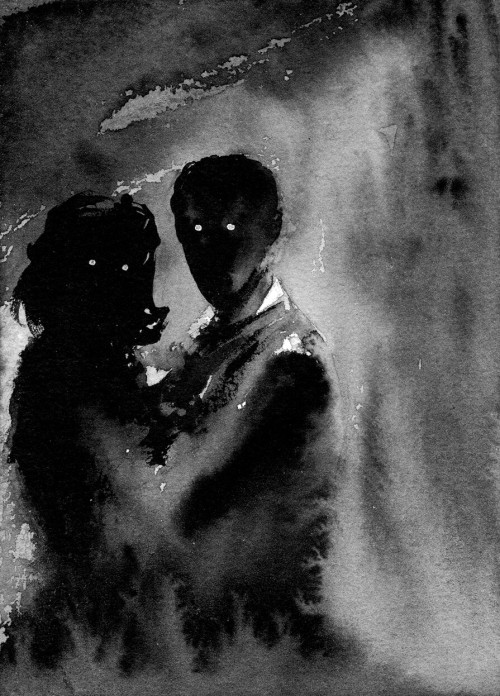
Ghosts by Preto Pasin
This artist on Instagram
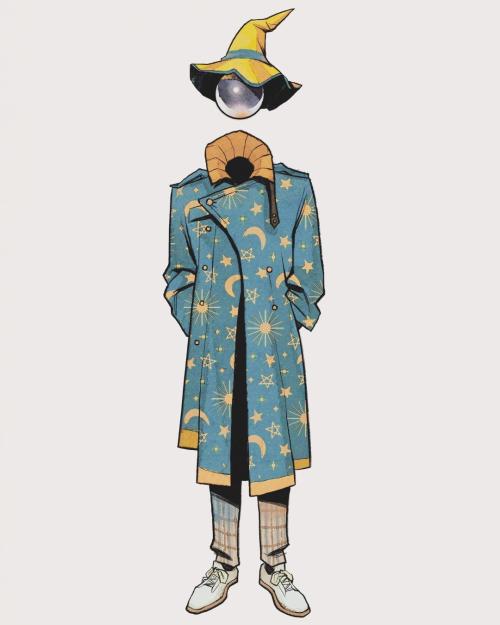
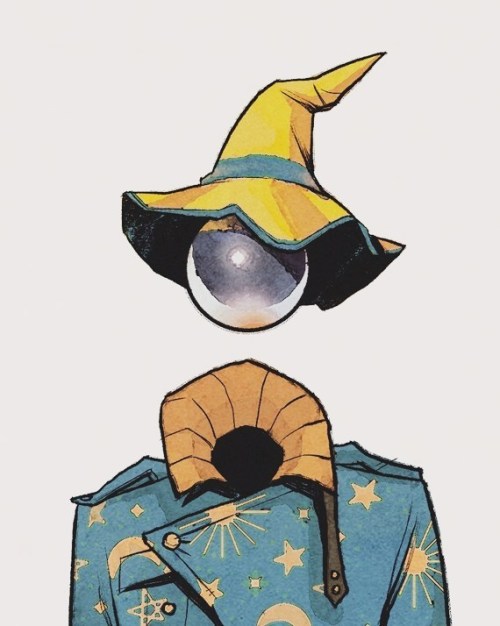
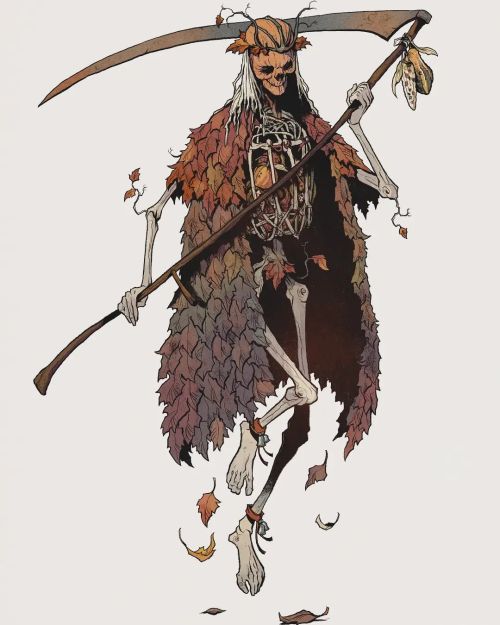

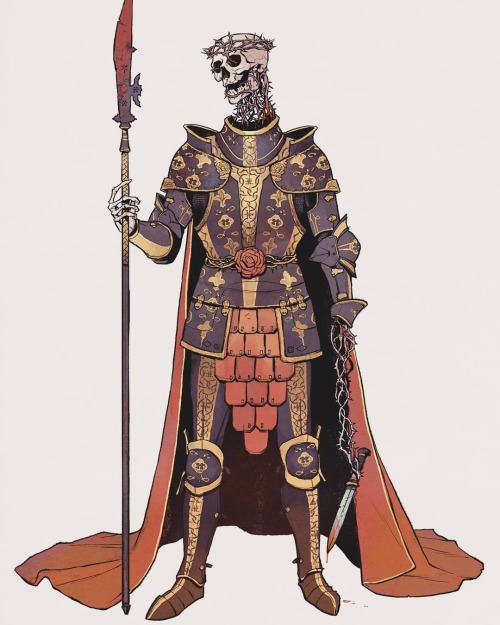



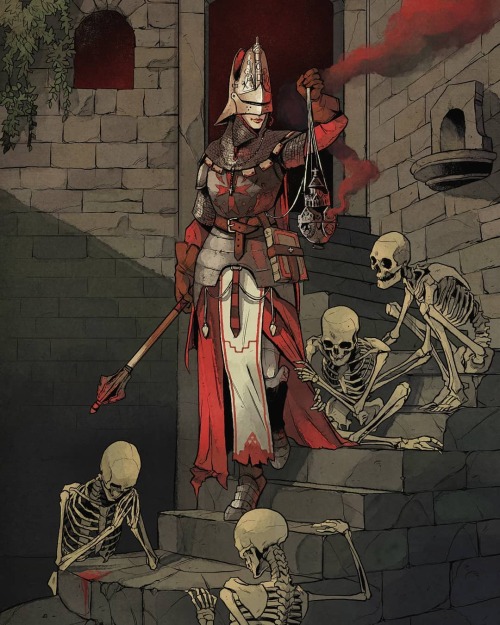
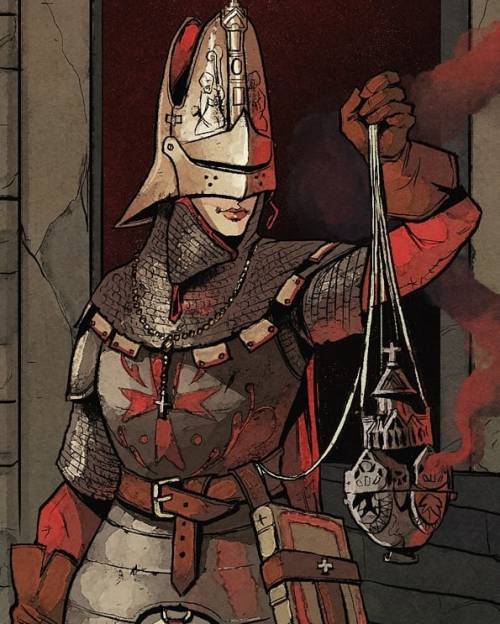
Nathan J. Anderson on Instagram


An invocation and a boon
Some UPG, as a treat…
So angels (or the beings we refer to as angels) are the architects of creation. By their very nature they form reality out of the limitless potentiality. They form energy into matter, the take chaos and make it into order. This is instinctual and unconscious. They do it because it is what they are.
Daemons are the opposite of this. They are beings of decay and rot. I think of them almost like mushrooms. They thrive on and help speed up the entropy of reality. Matter to energy, order to chaos, again this is just what they are.
This is not a case of right it wrong, benevolence or malice. They are simply two ends on the spectrum of reality. They do not oppose each other as enemies but simply as opposites, doing their part in the grand scheme of things.

Heart Girt with a Serpent Talon Abraxas




‘Mercury’ ‘Saturnia’ ‘I am Adonai’ ‘Spirit Forest III’ art by C. M. Kosemen

Demeter and Dionysus, from "Mythology" by Edith Hamilton, illustrated by Steele Savage.

Agrippa ~ Of the seals, and characters of natural things.
Everything therefore hath its character pressed upon it by its star for some peculiar effect, especially by that star which doth principally govern it: and these characters contain, and retain in them the peculiar natures, virtues and roots of their stars ….
Little things I've picked up
When blowing out candles, if I have trouble blowing them out, it usually means I'm not finished yet
Offering homemade goods is a surefire ancestor pleaser
Let nature help you create. Ask kindly for supplies, and you will receive
It's okay to take breaks. Recharging your metaphorical batteries allows your brain to processes the knowledge it's learned and integrates it into your system
While getting caught up in aesthetics can make your craft vapid, they play a role. Making yourself look fearsome to ward off "evil" spirits is an incredibly old tradition that spans many cultures. Aesthetics matter. But don't get lost in them
Like becomes like. The more I find myself gathering from the pine forests and leaving offerings for the land wights, the more I find myself becoming like the land. If you do the same, you'll find the same. And embracing this will embolden the power you hold over your craft
Whistle. Whistle to everything. To the birds, to the trees, to the bugs and the leaves. Whistle. And if you can't whistle, hum. Just make sure you take caution if you hear a whistle back.
Taking control can be hard. But you need to assert yourself. Stomp on your ground. Breathe deeply. Affirm your presence. You are a metaphysical lightbulb, and deciding how brightly you shine depends on where you plug yourself into. Be bright when needed. And dim when necessary
The most common trees in your area will be your best friends. Learn of them. Commune with them. Hug them
Bones. That's it. Bones
And always remember to use critical thinking skills and discernment. Be open, but be critical. Make sure you're not deluding yourself
Magic circles were originally cast with flour. From Wikipedia: Zisurrû, meaning “magic circle drawn with flour was an ancient Mesopotamian means of delineating, purifying and protecting from evil by the enclosing of a ritual space in a circle of flour. The choice of flour was crucial to the purpose of the ritual, with šemuš-flour reserved (níĝ-gig) for repelling ghosts, wheat-flour for rituals invoking personal gods and šenuḫa-barley to encircle beds, presumably to counter disease-carrying demons.
Ukrainian folk haircare minute with Red: if you wish your hair to grow long, as you comb it, whisper, "Grow as long as water, as quickly as grass".





The book says that these are talismans that are meant to be re drawn on paper and carried with you to give the you these abilities.
The Book of Oberon
Localizing Your Practice

So much witchcraft emphasizes how important it is to honor and work with the Earth, but then teaches us spells with ingredients we basically have to import using locations we don’t have access to. It’s rare to find an existing grimoire or guide book that actually works with where we live. We can still use them, but it doesn’t enhance our connection to our local land, which to many can feel important. Here are some tips for localizing your practice and working with the land you actually live on.
See what nature exists around you. Explore your own backyard with a critical eye. What plants can you actually go and pick yourself? What are those plants associated with? Do you have access to a creek or river? What does your local land actually have on it? If magic correspondences for your local plants haven’t been written about, you may have to do your own research. Example: I grow several plants on my back porch which I can potentially use for magic.There are magnolia trees and rhodedendrons on the grounds of my apartment complex. My parent’s neighbors have chickens in the backyard, so I have access to some feathers when they shed.
Check out local folklore, legends, etc. This is one of my favorite parts, but can also be the hardest. What are the stories of your area, both on a local and cultural scale. Example: A West Virginian may incorporate legends of the Mothman. Everyone says that one building on my old college campus is haunted (and they’re right.) People talk about that liminal-space feeling when you drive down that one road at night.
Find the magic spots. Sometimes the urban legends will tip you off to these (usually in a bad way) but other times you can find them on your own. A place where the energy is just right for some reason. A place you can go to be closer to nature, or a place you could host a ritual if needed. Sometimes it’s just a place where you can feel your mind open a little bit. Example: The shady corner of a public park. The tunnel downtown. That weirdly-perfect circle of trees in the woods behind Wal-Mart.
Meet your land wights. Spirits of the local land. This could be the fair folk, but also house spirits, the spirits of the trees near you, the nature spirits of wherever you are. They’re there. Be good to them and they’ll be good to you! Note: Some spirits and wights will not be interested in working with you, and that’s okay. I generally think it’s good to at least leave a polite offering to just be on general decent terms even if you never work with them more directly beyond that.
Check in with your Seasons. Harvest holidays generally don’t have actual lifestyle importance to most people reading this. The seasonal shifts other people write about may be from a very different climate than yours! Figure out a calendar that works for you. It doesn’t have to be detailed, but something that ties you to the seasons as you actually experience them. I also love working in any fun annual festivals nearby, if any.
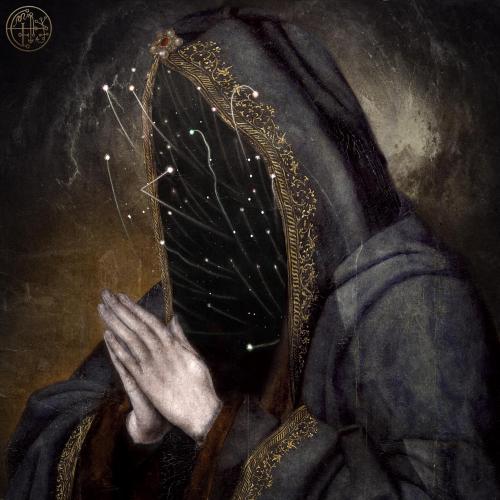
Our Wish for the End, Me, Digital Collage, 2020

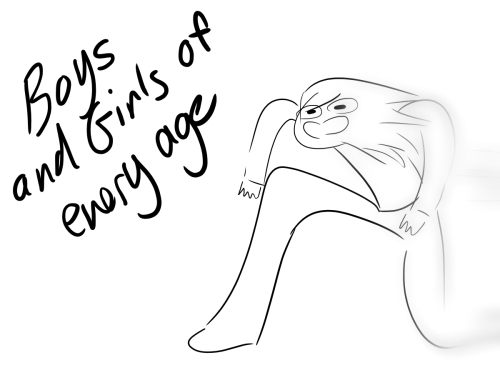

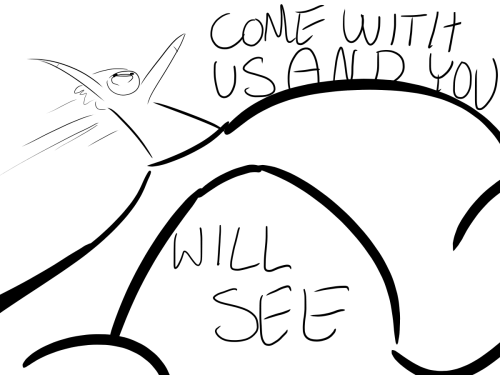


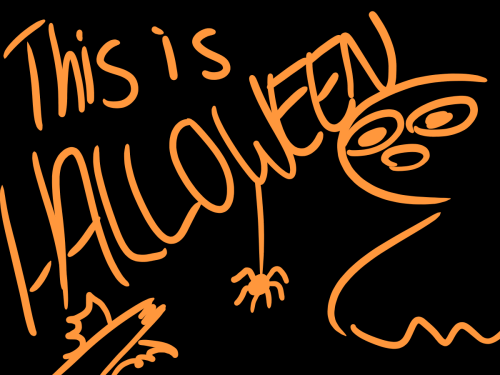
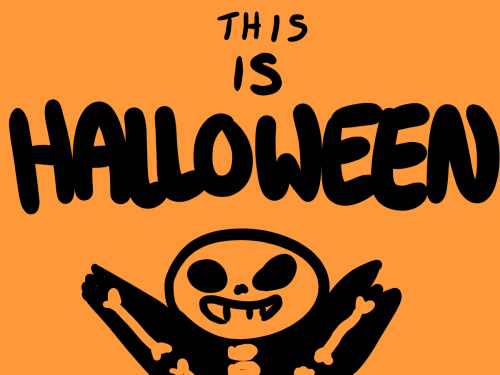
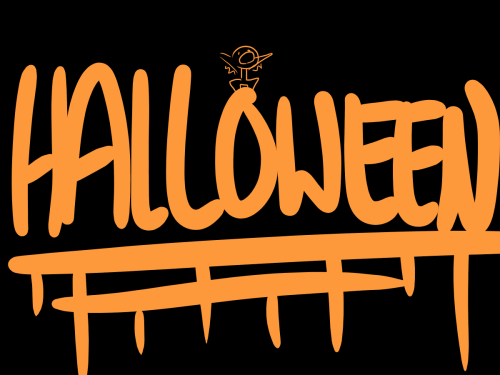

:/
VOCES MAGICAE
I’ve noticed a trend in modern magick that “the words don’t matter, only the intention” and this has never really been something that has sat well with me. If the words in spell craft “don’t matter” then why do we have such a long history of magickal words of power, incantations, prayers, liturgy and charms? The spoken word has always been one of the most potent forms or aspects of my magickal workings.
The last few years of working within Fayerie Traditionalism and the rites within “An Carow Gwyn” and “An Cawdarn Rudh” I’ve come into contact with barbarous names. Also called “voces magicae” these are words that are seemingly meaningless words that are supposedly magickal or powerful in nature. These words were/are usually bastardised words from languages that were not Greek or Latin. Incantations containing barbarous words come to us from The Greek Magical Papyri (Papyri Graecae Magicae or PGM), a collection of spells and rituals and liturgy from Greco-Roman Egypt. The power of these words comes not from any supposed meaning but from their sound of resonance. This can make employing them difficult because the magician must know the proper pronunciation. For this reason I am very thankful to Robin Artisson for giving phonetic spellings of any barbarous names (commonly referred to as “strange words” in the Fayerie Traditionalism material) used in rites and spells.
Other types of magickal words similar to these are ones Robin has given in “The Clovenstone Workings” the words of power given in that book are channeled words taught to him by the fayerie close to him. One such word is the word of the Gateway Ring: NURTANUMO. This word is in itself as spirit as well as an incantation. Speaking it correctly and with the correct ritual actions create a liminal space within which a sorcerer may commune with helpful and “friendly” spirits(I say friendly to mean that the word helps to keep out any spirit that might mean one harm or does not resonate with the purpose of ones magickal working). Along with NURTANUMO and other words of power given in “The Clovenstone Workings” they are accompanied by sigils formed by the letters of the word.
Another form of incantation or words of power that I want to start exploring is charms. I mean by this the spoken charms found in most forms of American folk magic. These re usually rhyming couplets that are believed to contain a power all their own, in some traditions though, one must be born a “charmer” to use them with any effect. Seeing as these come from forms of folk magic, many of these charms call upon the power of God, Jesus, the saints, apostles, or the Holy Trinity. Many pagans within the U.S. are coming into witchcraft and paganism from Christianity and carry with them some level of trauma. This in turn can cause hang ups of one kind or another when employing any types of magick that have any Christian trappings. I personally had these issues early on in my Path. Over time I came to a realisation that helped me (the following is UPG so take it accordingly) Power is Power. I personally believe that charms and and psalms that have a history of magickal use contain their own power that has been generated through belief. Generations of people spoke these words and believed in the power of them and so they have that power. Along that line of thinking is my belief that when I speak a charm it is not just me, but every person before me who spoke it for the same purpose. I am chanting and charming with the Ancestors and they bolster no only my Power but the Power of the charm. You can find collections of charms like this in the braucherei text “The Long Lost Friend”. Another source though not American is the “Carmina Gadelica” a collection of Scottish charms, hymns, prayers and lore. Gemma Gary as also written the “Charmer’s Psalter” a collection of psalms and biblical scripture used in English folk magic. (I do plan on getting my hands on all three of these eventually)
One last note on rhyming charms. I’ve seen a an explanation for rhyming couplets being used in magick as a way to enter into light trances to work magick. You write or find a charm that aligns with your purpose, and chanting it helps to “set your intention’ as you slip into trance. As far as I can tell this is a relatively modern explanation for their Power, it is however no less of an effective method. I have used this technique to help me enter trance, more specifically the level of trance I want when using glossolalia; speaking in tongues (another potent and powerful form of spoken word magick).
Looking back at the idea of belief giving words power. This idea is why I think it is possible to use incantations from media and pop culture in actual spell work. There are cases where a tv show or book will take a pre-existing spell or incantation and reword it slightly to fit the show or scene. In this case the ritual action accompanied by the spoken spell can have great effect. In other cases if you know how the spell operates within the fictional universe, this can signal your own spirit and those spirits you work with what you want to achieve. One personal experience I have with this is using the lost and found spell from Charmed. Anytime I employ this spell I fix an image of the object in my mind, breathe deeply, recite the spell three times, and then set the spell with a sharp clap and a “so mote it be”. In this way I’m not simply reciting the spell and expecting things to appear as happens in the show. I use the incantation in conjunction with real world magickal techniques and have always gotten positive results. Once I do this spell and continue searching I will often find the lost object within an hour, sometimes a day at most.
Regardless of your views on words in magick I think it does our history and Ancestors a disservice to simply dismiss them as an arbitrary or useless aspect of magickal practice.

Angrboða, by Johan Egerkrans
